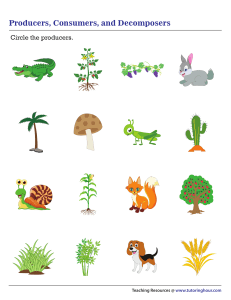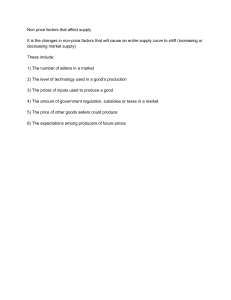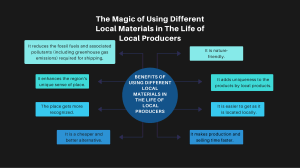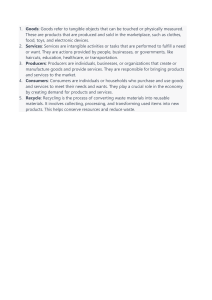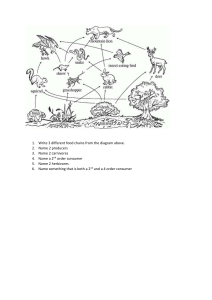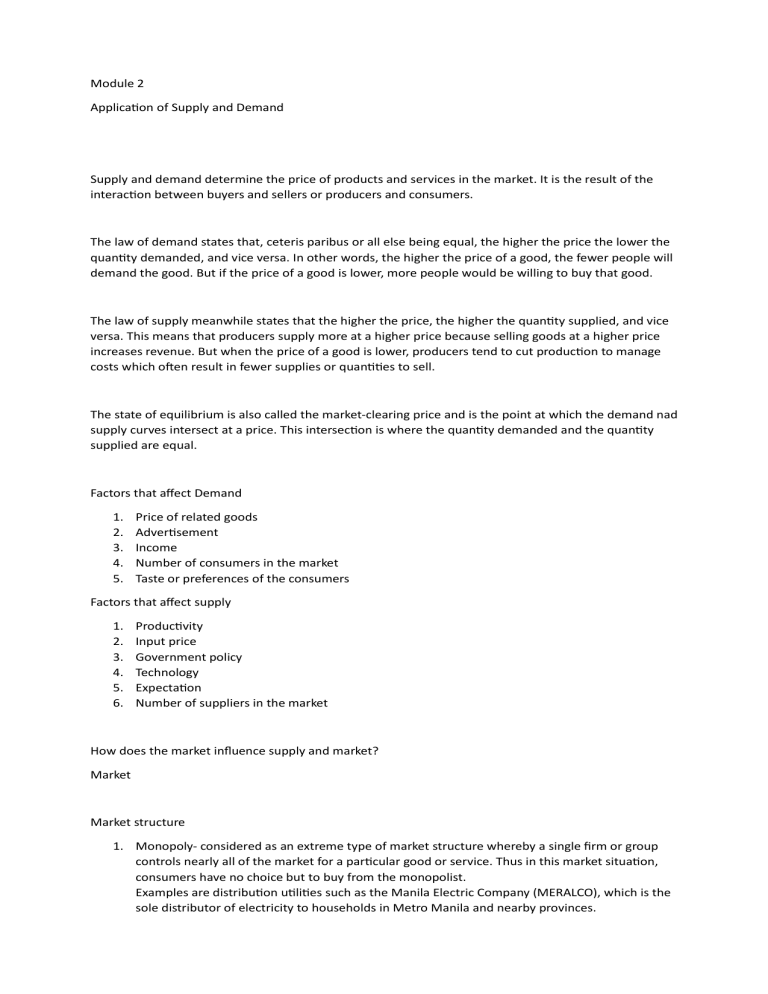
Module 2 Application of Supply and Demand Supply and demand determine the price of products and services in the market. It is the result of the interaction between buyers and sellers or producers and consumers. The law of demand states that, ceteris paribus or all else being equal, the higher the price the lower the quantity demanded, and vice versa. In other words, the higher the price of a good, the fewer people will demand the good. But if the price of a good is lower, more people would be willing to buy that good. The law of supply meanwhile states that the higher the price, the higher the quantity supplied, and vice versa. This means that producers supply more at a higher price because selling goods at a higher price increases revenue. But when the price of a good is lower, producers tend to cut production to manage costs which often result in fewer supplies or quantities to sell. The state of equilibrium is also called the market-clearing price and is the point at which the demand nad supply curves intersect at a price. This intersection is where the quantity demanded and the quantity supplied are equal. Factors that affect Demand 1. 2. 3. 4. 5. Price of related goods Advertisement Income Number of consumers in the market Taste or preferences of the consumers Factors that affect supply 1. 2. 3. 4. 5. 6. Productivity Input price Government policy Technology Expectation Number of suppliers in the market How does the market influence supply and market? Market Market structure 1. Monopoly- considered as an extreme type of market structure whereby a single firm or group controls nearly all of the market for a particular good or service. Thus in this market situation, consumers have no choice but to buy from the monopolist. Examples are distribution utilities such as the Manila Electric Company (MERALCO), which is the sole distributor of electricity to households in Metro Manila and nearby provinces. 2. Oligopoly- few dominant firms or groups control a market. It is characterized by an industry dominated by a small number of producers, selling either homogenous or differentiated products with limited competition and has significant barriers to entry. a perfect example of this type of market structure is the telecommunications industry. 3. Monopolistic competition- it is characterized by an industry where many producers sell products or services that are similar, yet not perfect substitutes. 4. Perfect competition- type of market structure where there are many buyers and sellers competing against each other with homogenous or similar products.
